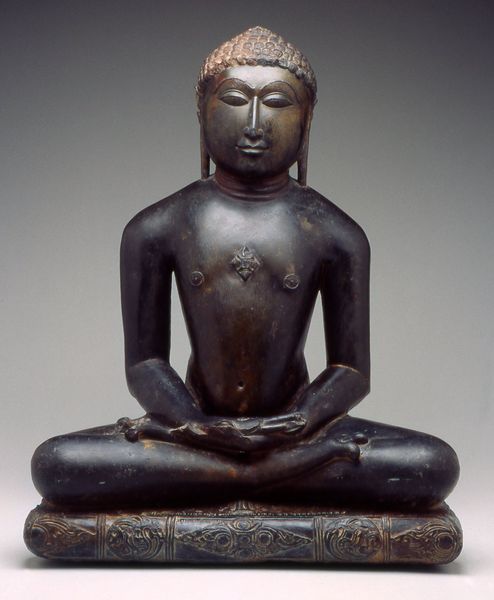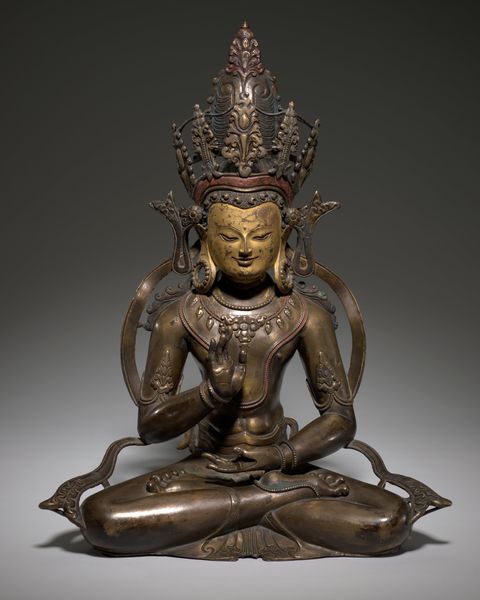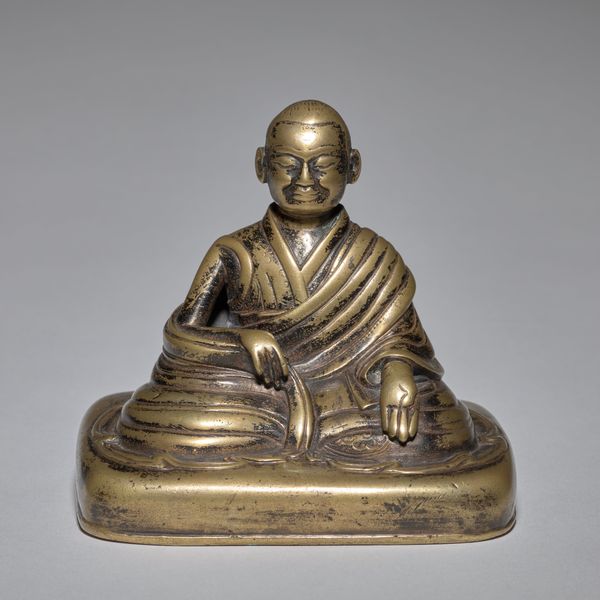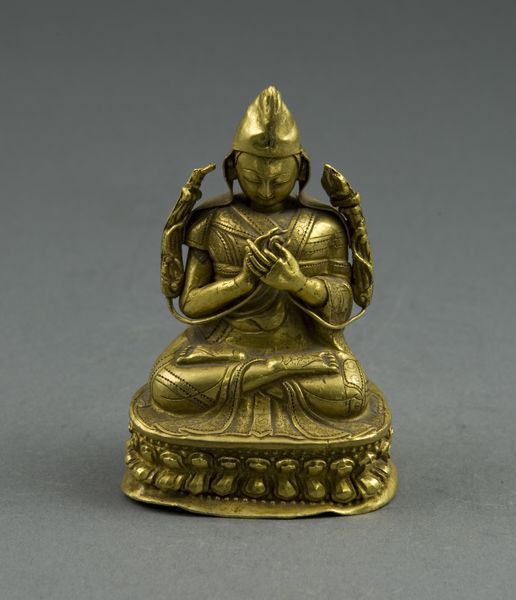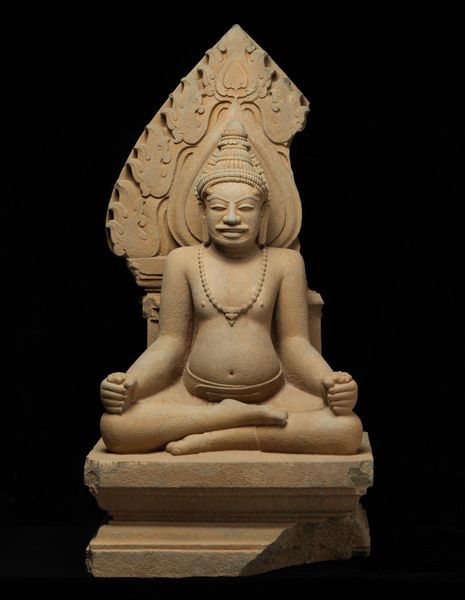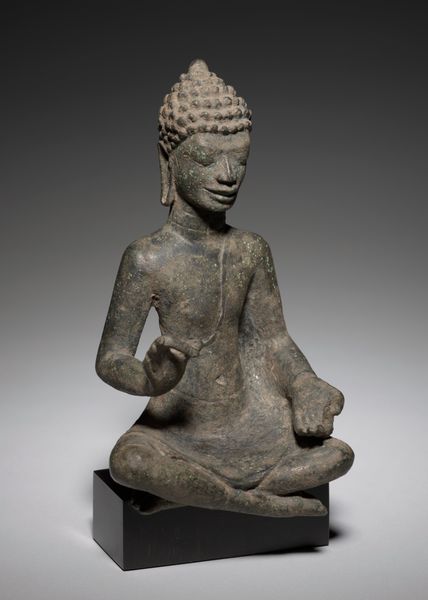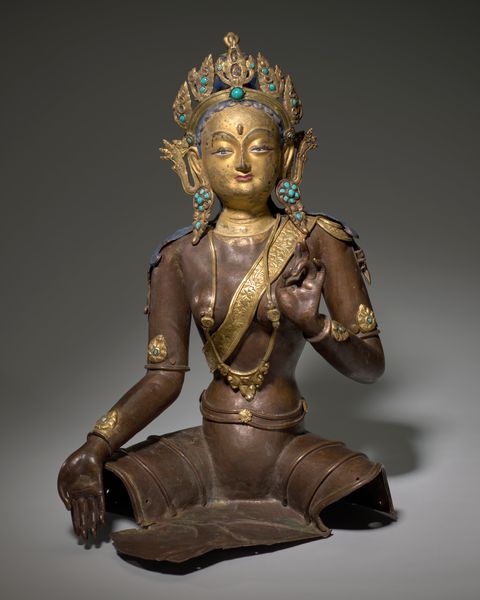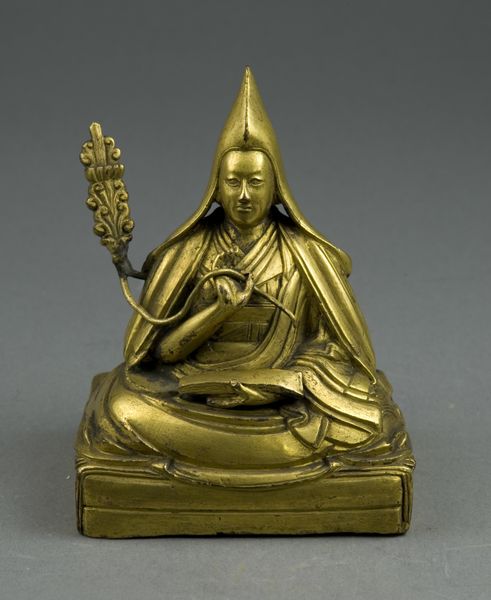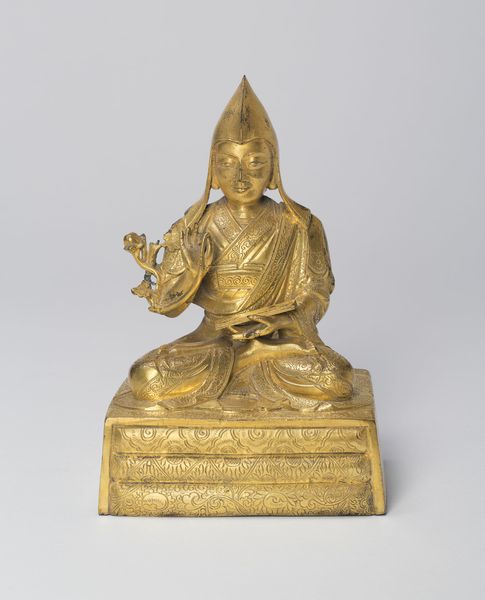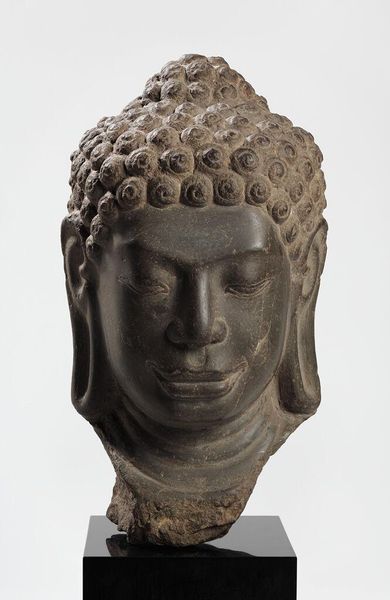
Shakyamuni Buddha Calling the Earth to Witness c. late 18th century
0:00
0:00
carving, sculpture, wood
#
portrait
#
carving
#
stone
#
sculpture
#
asian-art
#
figuration
#
sculpture
#
wood
Dimensions: 45-3/4 x 25-3/4 x 16-1/2 in. (116.2 x 65.4 x 41.9 cm)
Copyright: Public Domain
This sculpture of Shakyamuni Buddha was created by an anonymous artist in an unknown location. It's made of wood and lacquer, materials that are deeply interwoven with the cultural landscape of Buddhist art. The use of wood is significant. It is relatively abundant and easy to work with, however its inherent qualities of grain and texture demand careful consideration. The artist skillfully carved the wood, allowing the natural form to guide the contours of the Buddha’s body. The application of lacquer adds a layer of refinement, enhancing the visual appeal while also serving a practical purpose, protecting the wood from moisture and decay. This carving would have taken a long time to produce. The carving of a wooden form requires patience, dexterity, and a deep understanding of the material. The act of making becomes a meditation in itself, reflecting the spiritual essence of the subject. Ultimately, this sculpture challenges traditional notions of fine art and craft. The anonymous artist demonstrates how skill, material knowledge, and mindful making can converge to create an object of profound beauty and spiritual resonance.
Comments
minneapolisinstituteofart almost 2 years ago
⋮
With his right hand touching the ground and his left hand held palm up in his lap, this figure shows the historical Buddha, Shakyamuni, performing the “calling the earth to witness” gesture (bhumisparsha-mudra). It is a depiction of the moment immediately after his enlightenment. While meditating, the Buddha was bombarded by an army of demons and other fiends sent by the demoness Mara. The steadfast Buddha nevertheless overcame her distractions and achieved enlightenment. Mara tried to claim the Buddha’s enlightenment as her own, with the demon hoards as her witnesses, but the Buddha, reaching out his right hand to touch the ground before him, called upon the earth itself to bear witness to this achievement. To create this sculpture, the artist first created a core image of clay, then applied many thin layers of lacquer, and finally removed the clay core, leaving a thin-walled hollow image that is extraordinarily lightweight and durable.
Join the conversation
Join millions of artists and users on Artera today and experience the ultimate creative platform.



